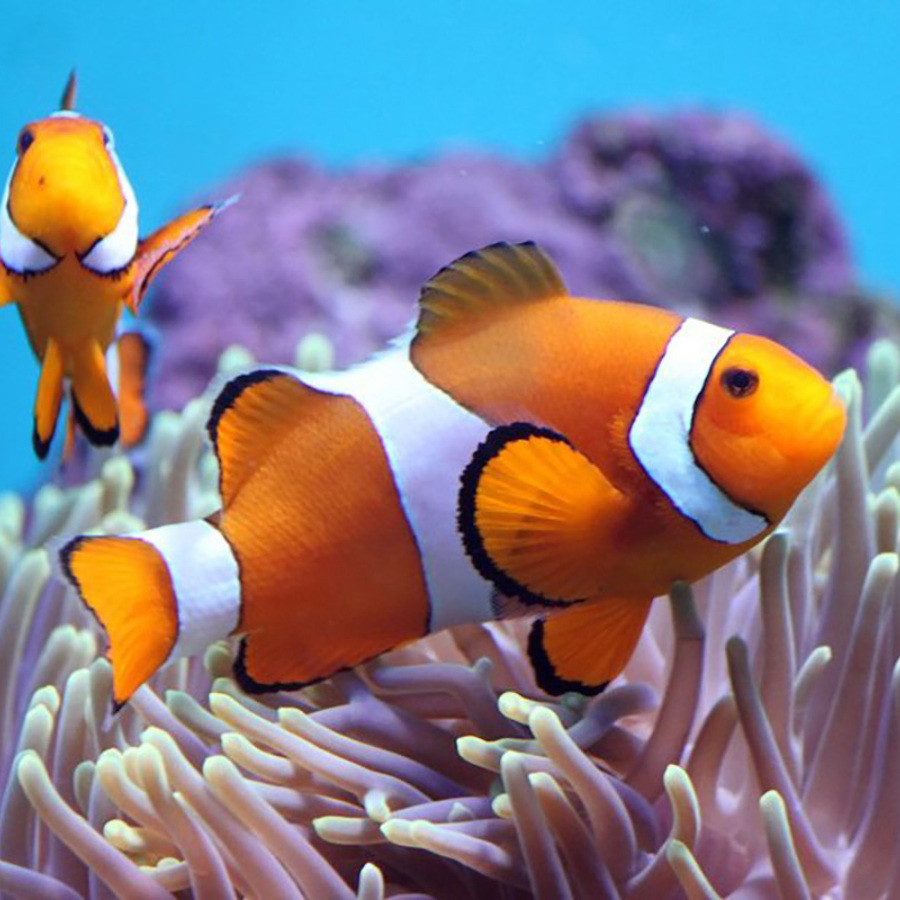
How do clownfish change their sex?
June 25, 2004

- Related Topics:
- Genetic sex,
- Animal biology
A curious adult from California asks:
“I read from an article that many bony fish which include Nemo, the clownfish, change sex throughout their life-spans. How does changing sex impact their DNA? Were they born with both X and Y chromosomes or somehow they were changed when the sex was changed?”
It is amazing the variety of ways Mother Nature has come up with to determine whether an animal is going to be male or female. As you know, for humans, sex is determined by the presence of a Y chromosome -- humans with an X and a Y chromosome are male and those with two X chromosomes are female.
In birds, the opposite is generally true. The male has two of the same chromosome, Z, while the female has two different sex chromosomes, W and Z. So in birds, the female decides the sex of the offspring while in humans, it is the male.
Other animals have no sex chromosomes and their sex is determined in different ways. For example, the temperature at which their eggs are incubated determines the sex of a turtle -- if the temperature is below 86, they are all males, above 86, and they are all females.
For clownfish like Nemo, it is particularly complicated. All clownfish are born males. A clownfish group consists of a dominant male and female and 0-4 juvenile males. So where did the female come from in the group? When the female dies, the dominant male changes sex to become the dominant female and one of the juveniles becomes the dominant male.

Do these ways of making males and females have anything in common? Yes. In all cases, whether you are male or female is determined by a certain set of genes being turned on.
In people, the presence of the Y chromosome determines this. The Y chromosome has a gene called SRY that signals the body to become male. In other words, the SRY gene must be on to make a male. In fact, if SRY is present in someone with two X chromosomes, they appear male and if someone is XY but has a mutated SRY gene, they look female.
The same is true for species without sex chromosomes. For example, in turtles it may be that high temperature shuts off the turtle SRY gene so you get females. In the case of clownfish, the absence of a female results in a male changing to a female. We don’t know exactly how this works, but it’s possible that the female clownfish produces some sort of chemical signal that keeps males from becoming female.
In terms of what's going on biologically in the clownfish, apparently the dominant male has functioning testes and some latent cells that can become ovaries under the right conditions. Once the female dies, the testes in the dominant male degenerate and ovaries form from the latent ovarian cells.
I hope this helped shed some light on the topic -- it is a strange, strange world out there.

Author: Dr. Barry Starr
Barry served as The Tech Geneticist from 2002-2018. He founded Ask-a-Geneticist, answered thousands of questions submitted by people from all around the world, and oversaw and edited all articles published during his tenure. AAG is part of the Stanford at The Tech program, which brings Stanford scientists to The Tech to answer questions for this site, as well as to run science activities with visitors at The Tech Interactive in downtown San Jose.
 Skip Navigation
Skip Navigation
